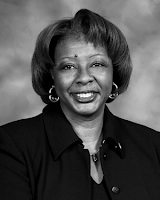It is undeniable that the Latino vote had a tremendous impact on the election. Approximately 17.9 million Latinos are currently eligible to vote, 9.1 million of whom are women, and since 2004, the number of Latinos registered to vote has doubled.
Early exit polling suggests that Latinos overwhelmingly supported Obama, with 67 percent voting for Obama and 30 percent voting for McCain. According to the University of Massachusetts's Center for Women in Politics and Public Policy, Latinas have become increasingly engaged in politics, making up 5 percent of total voter turnout (Latino men made up 4 percent). Latino overall support for Obama became especially significant in the battleground states of Colorado, Florida, Nevada, New Mexico and Virginia; all of which have large and growing Latino populations, and all of which were carried by Obama. These statistics are just proof of the fact that the Latino vote matters more than ever before.
The Latino vote has led to the great strides for women and Latino candidates and increased their representation in the federal government. In 2008, Latinos ran in over 37 states across the country for both federal and state legislative seats. The 25 Latino members of Congress added another colleague to the list who will serve in the U.S. House of Representatives. The 111th Congress will include seven Latina Congresswomen from Florida, New York, and California. They’ll be joining the 64 re-elected incumbents in the U.S. House of Representatives.
The gains weren’t limited to the U.S. Congress either. State legislatures across the country had Latinos elected to seats in numbers never previously seen, particularly in Wyoming, Kansas, and Oklahoma.
Now that we have new leadership in place, we advocates, activists and organizers must rise to the occasion. We must take the momentum of this election to our everyday organizing and activism, placing women's ability to care and provide for their families at the center of our platform.
While the economy proved to be the top issue among the general electorate, Latinos also voted with immigration policy in mind. The Republicans’ divisive and xenophobic rhetoric about immigrants proved harmful for garnering support in the Latino community, which in the past has supported some Republican candidates. Senator McCain, who co-sponsored comprehensive immigration reform legislation in 2006, turned his back on the immigrant community during the campaign. He publicly stated that he would not vote for the same immigration bill that he once sponsored if it came to the floor for a vote in 2008. These harmful statements fuel the flames of hatred and blame towards immigrants and may have cost him the election.
Latinas can finally say ADELANTE, our time has come. Now the real questions face us. What does this new era mean? What do we want for our families and communities? What does a Latina agenda for reproductive justice and immigrant rights look like? To begin, the National Latina Institute for Reproductive Health has three top requests of the new administration:
1. Repeal the Hyde Amendment, which denies low-income women access to abortion services;
2. End the discriminatory, militaristic and inhumane immigration enforcement practices that are destroying our communities; and
3. Support an equitable and affordable plan for comprehensive health care for all.
As a community, we remember the spring of 2006 when Latino immigrants marched in droves with other immigrants and allies fighting harmful immigration policies put forth by the Republican Party. We held signs and chanted “Hoy Marchamos! Manana Votamos!” (“Today we March! Tomorrow We Vote!”). Well, “tomorrow” has arrived and Latinas and immigrant voters cast their ballot for hope, dignity and justice instead of fear.
------------------------------------------------------------------------
Gonzalez-Rojas is director of Policy and Advocacy for National Latina Institute for Reproductive Health
------------------------------------------------------------------------
Copyright (C) 2008 by the American Forum. 11/08








